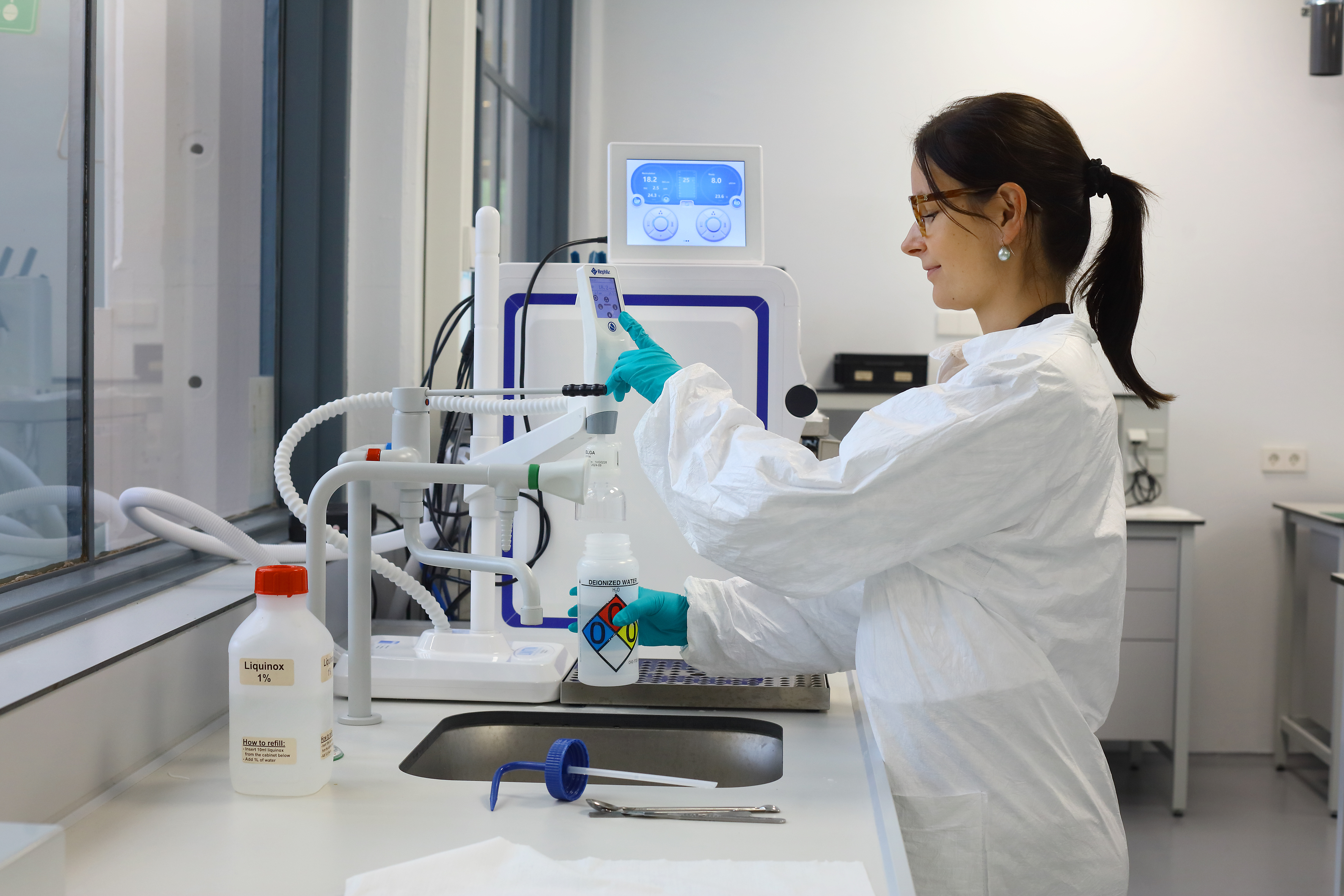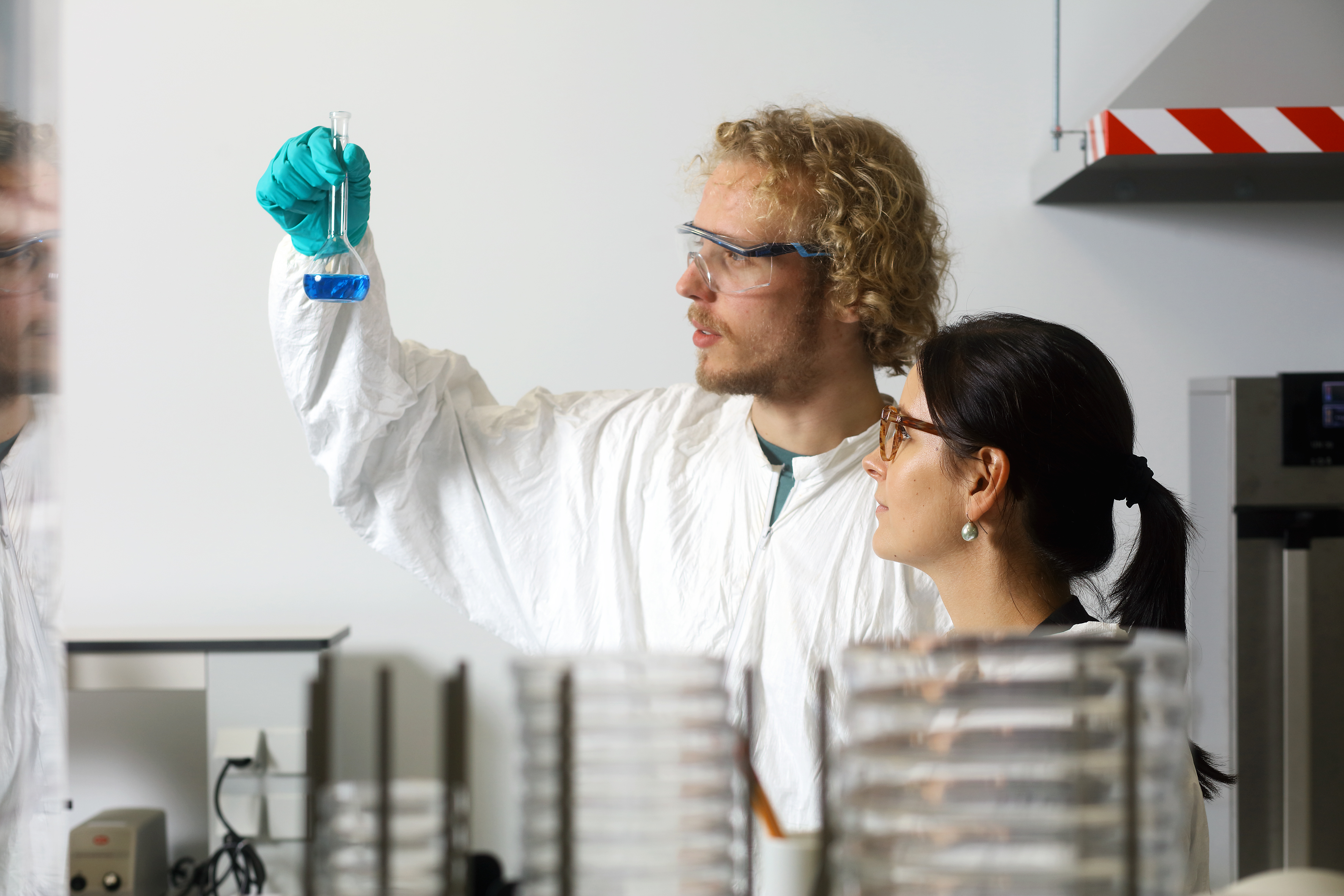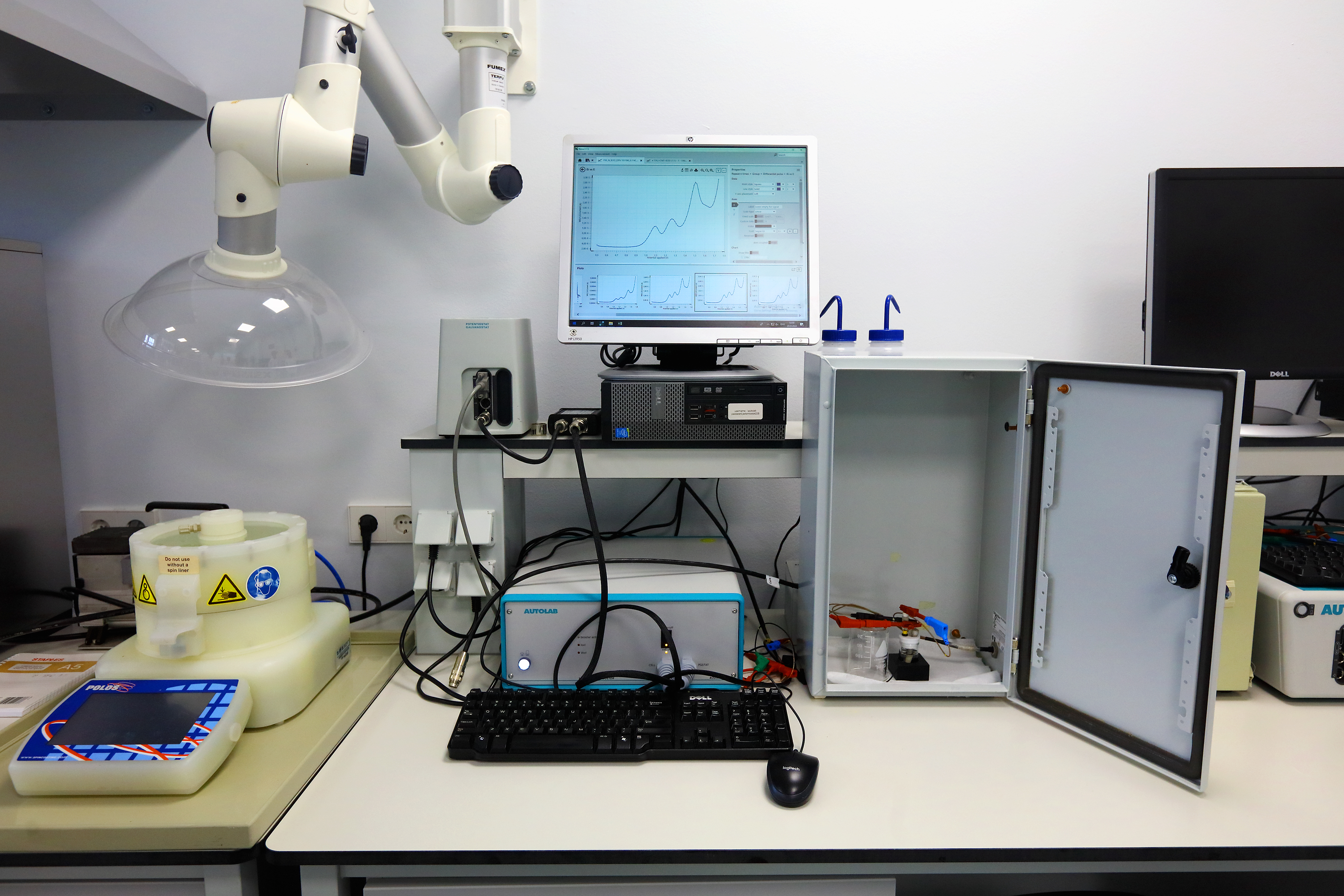The Faculty of Mechanical Engineering (ME), TU Delft, is proud to unveil its modernised and expanded Chemistry Lab, offering more room, better facilities and better integration of space that will enable more researchers to work together at any one time.
Ivan Buijnsters, an Associate Professor at the Precision and Microsystems Engineering department (PME), leads a research group that makes a lot of use of the Chemistry Lab: “In our faculty building a number of renovation plans are taking place, largely in response to the overall growth of different departments within the faculty. And the Chemistry Lab was a priority because of the increasing number of students and researchers wanting to use chemicals in an appropriate environment. So we decided to enlarge the available space, and cluster and align all the activities regularly carried out by the two departments, PME and Bio-Mechanical Engineering (BMechE), so that we could better accommodate the growing numbers of students and temporary researchers such as post-docs and PhDs.”
Better facilities, double the workspace
Technician Alex van den Bogaard, who oversees the daily running of the Chemistry Lab, was instrumental in redesigning the use of the space within the lab: “With respect to logistics, we now have better pathways and distribution of experiments. We also have better personal protection equipment and more cabinets and places to put consumables so it’s a much cleaner environment. And we have more room to store both chemicals, and the researchers’ own samples so it’s much less crowded and therefore easier to work here than before.”
Aside from doubling the available workspace, the new Chemistry Lab has added facilities including two Fume Hoods - ventilation devices which limit exposure to hazardous or toxic fumes - and this will mean more people can work together at the same time. There’s also a new dehydrator which can remove water but also other solvents from experimental samples. Buijnsters: “For several sample preparations, we use a critical point dryer but that uses a lot of CO2 which is not desirable these days so we use different solvents that can be operated here, thus avoiding the use of CO2 completely.”

A wider range of research
ME’s need for a modernised high-spec chemistry lab is not only driven by growing numbers of students and researchers but also by the different of types of research performed in the PME and BMechE departments. Buijnsters: “We cover a wide variety of research - for instance, in electrochemistry, we are focussed on the detection of bio-active compounds used for medication and environmental pollutants. There are also many people who work with 3-D printing, using photo-sensitive materials such as acrylates or hydrogels. And we have people working with another polymer material called PDMS, which is used in microfluidic applications where you can mould or cast right down to the millimetre or even the micron scale. And then there’s surface functionalisation, which is a process of modifying the surface properties of a solid material by adding another chemical compound to the surface. All of these procedures require the use of a high-functioning Chemistry Lab.”
One regular user the Chemistry Lab is post-doc researcher Simona Baluchová who is working on boron-doped diamond electrodes for waste-water treatment in pharmaceuticals production: “I use electrochemistry related equipment which, differently from other researchers, is now permanently in a one corner of the lab. So that means that if we want to work and conduct experiments, my team and I can spend the whole day in here because there is a dedicated space and enough room for our activities.”
Training
Another important advantage to having more space and better facilities is that students can be trained in the Chemistry Lab environment. Van den Bogaard: “A lot of people working and studying here have a mechanical engineering background but don’t know anything about chemistry aside from what they were taught at high-school, so now we can train them here.”
“And with the increasing interest in energy transition,” adds Buijnsters, “electrochemistry is one of the most promising approaches for CO2 reduction, for electrochemical synthesis and alternative techniques - and we believe that having our students and young researchers trained in such an environment will also be to their benefit in the future.”




